Why The Roof on Your Off-Road Ride Should be White
Cooler temperatures and style
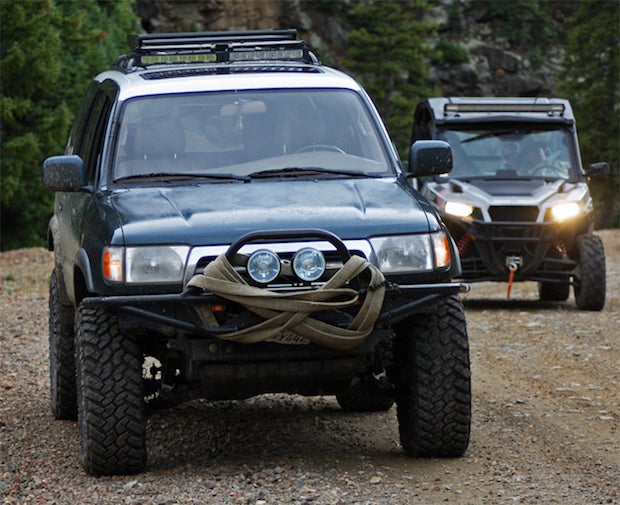
What's flat and white and on your off-road rig? Its next roof.
It has been one year since we thought up this three-for-one solution to a common truck problem. Our idea is not unique, but we came to it organically: neck-deep in the off-season desert and rock meleethat California four-wheelers call "winter", the author realized that a fix for a truck problem - crap paint on the roof - could also remedy the interior heat buildup caused when the truck was in the sun or being driven around the desert. A reflective paint color would also reduce damage caused to all roof and interior parts by that sun exposure.
READ MORE: Honor Thy Patina: Subtle Spring & Shock Job for a 1972 Toyota FJ40
You might benefit from this fix too, but first you must ask yourself if you suffer from any of these problems:
- Heat: Are you sick of interior heat? Does your truck's dark color make that heat worse?
- Exposure: Does your truck spend time in the sun? Not just regular sun, but desert sun?
- Fade: Is your truck factory-equipped with bad paint (ahem, Dodge and Toyota)?
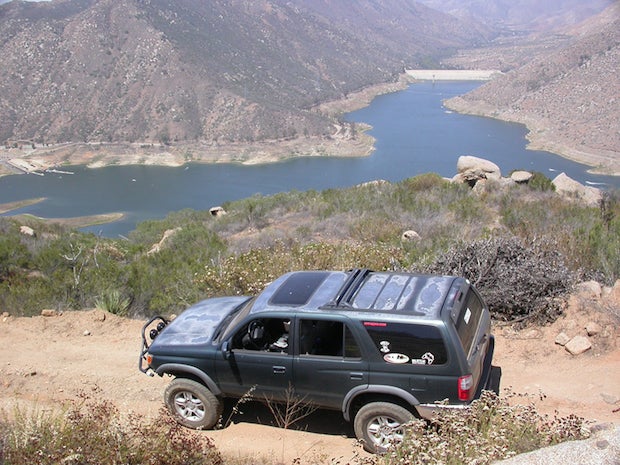
Why White Paint?
So, what's the solution? Paint it white. And if you have a predilection to shadetree mechanic-ism, painting something like the roof is a breeze (and for which 9/10ths quality might be enough). Companies like Touch-Up Direct sell matched paint (or whatever match you like: Touch-Up Direct had a creamy Toyota Supra white that looked a lot like an old FJ40 gel-coat roof). OE-matched paints make it easy to spec exactly what color is right.
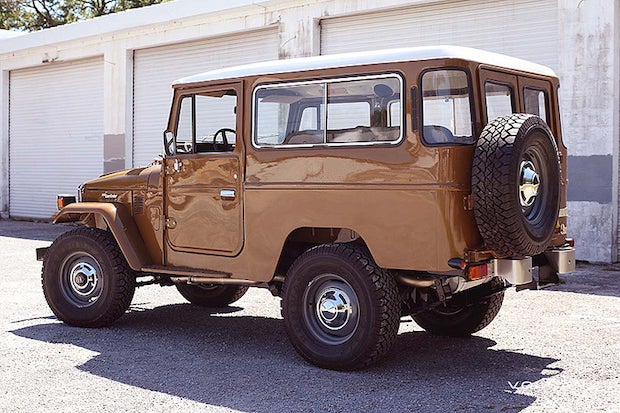
For the third-gen 4Runner in question, the white-roof solution was also a throwback nod to the retro goodness of vintage Toyota FJs. Those gel-coat roofs were not about lazy engineers or leftover white paint. For a truck being sold in countries with names like Rhodesia, Colombia and Equatorial Anywhere, reducing in-truck heat was a necessity.
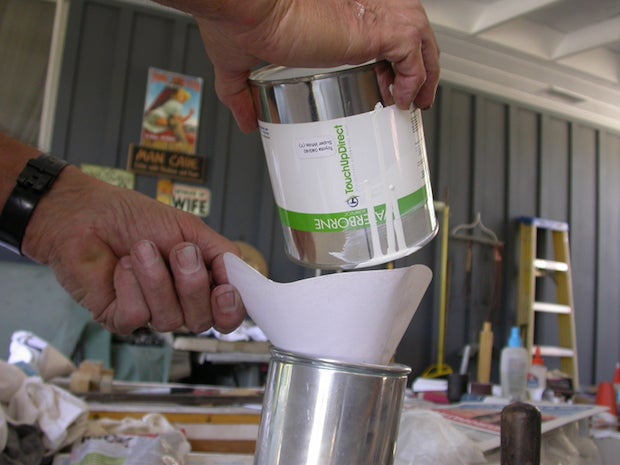
If you live in Minnesota, a white roof might only serve you about two days of the year (you should invent some sort of truck-mounted mosquito artillery instead), but in sunny or hot regions, a dark roof generates a lot of heat, especially on a large truck with lots of horizontal metal (even more so with wagons like a 4Runner, Exploder, XTerra or Suburban).
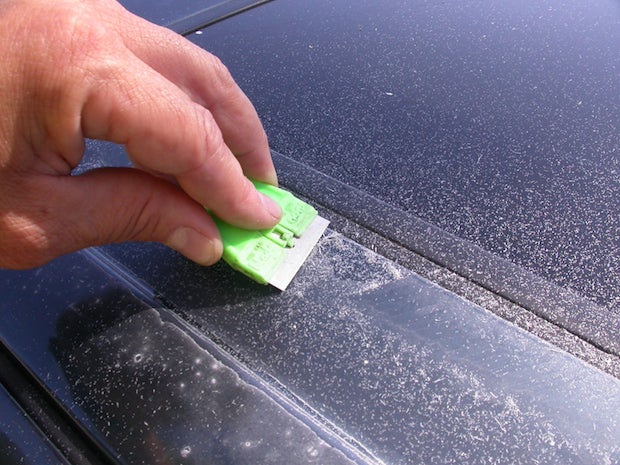
Keep in mind, a white roof can be had for a newer truck (with good paint) by using a wrap or vinyl overlay, but that appliqué requires good paint to adhere to. A wrap also needs less preparation, but will be more expensive than paint. However, for an old truck that needed new paint to maintain the protection of the roof, you're going to be painting anyway - might as well paint it white.
White Roof Temperature Differences
The before-and-after temperature drops for a white-roofed truck that started life with dark paint are noteworthy. These measurements were taken on a dark green 4Runner with the windows up, parked in the sun for two hours on a summer San Diego day. The concrete driveway's temperature was 150 Fahrenheit. Here's how much difference a white roof makes:
- Dark-green roof external temperature: between 176-180F.
- The same roof, painted white (other circumstances unchanged): between 104-113F.
- The dashboard - exposed to the sun and interior heat - dropped from 212F to 185F.
- The elbow rest, exposed to interior heat but not sun, dropped from 204F to 165F.
These temperatures show us that white paint reduces the temperature of the roof surface, which in turn cools the vehicle. Windows and the sunlight they allow into a vehicle contribute to interior heat of course, but just cooling the roof surface can still have a major effect on the interior temperature.
And pro tip: rolling down windows or cracking the sunroof allows that heat to vent.
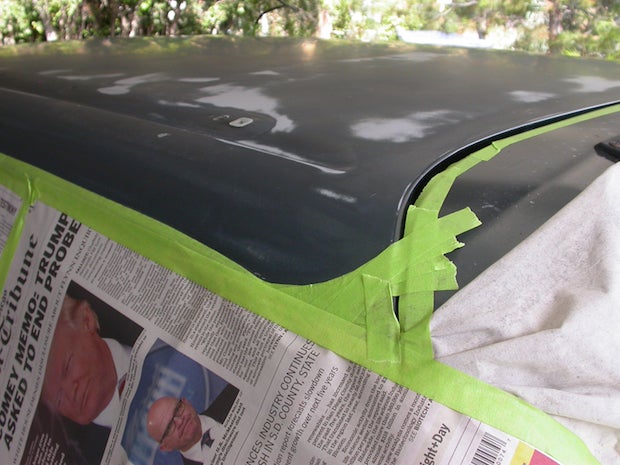
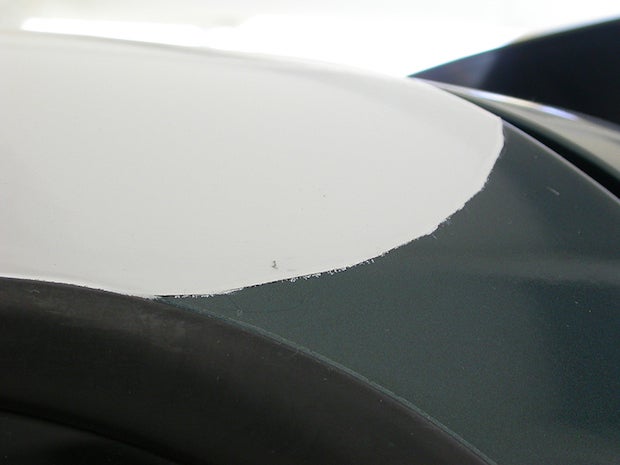
Thoughts and Tricks for Shadetree White Paint
Installing a white roof on an older truck - even one with lousy paint - is not hard. You will break a sweat though, because you need to prep. Surface prep is the name of the game for auto paint, because if you give paint a good surface to bond with, it'll last a long time. Any clearcoat that's failing, scrape it off. Any colorcoat that's oxidized, sand it. Don't spare the details.
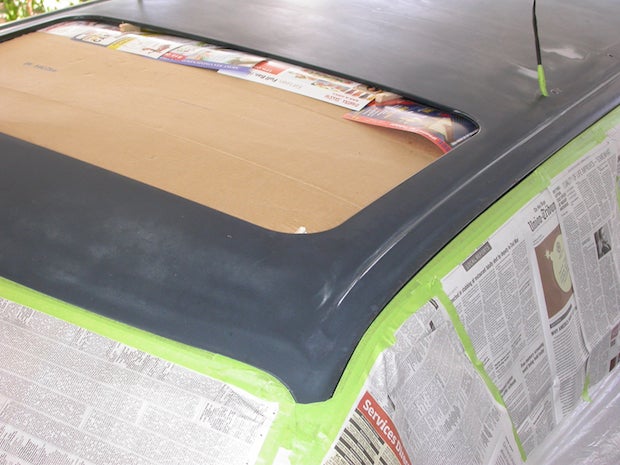
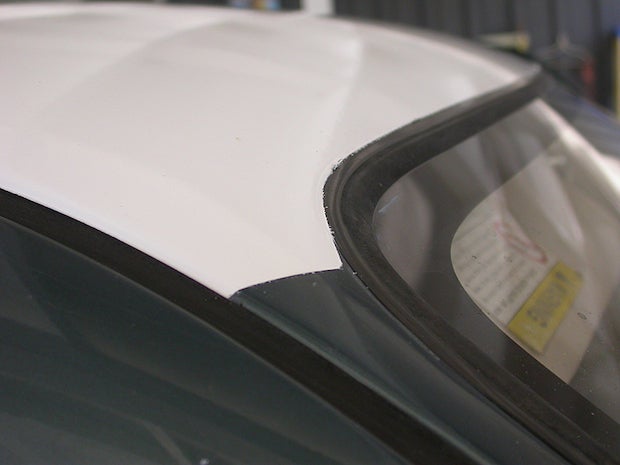
For a surface that's going to be very visible, you'll need to get all the clearcoat off. Smooth is not a goal, it's a necessity. For the roof of a lifted truck or a beater, you can hedge a little with the ten-foot rule, which dictates that the job looks good from that far away. We didn't remove clearcoat that was still bonded properly, instead feathering the edges. Also, because of the relatively flat surface of the roof, we used a random-orbit palm sander and 300-grit paper. You will need to change pads a few times to avoid buildup on the pad galling the painted metal surface (don't worry - you can still use them for woodworking). Wipe down the roof with a tack-cloth repeatedly.
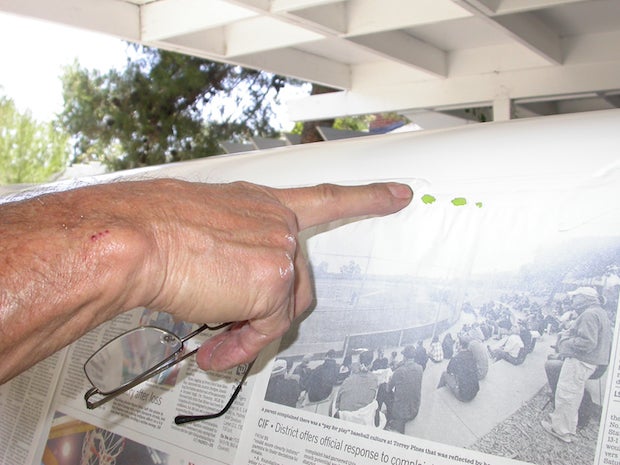
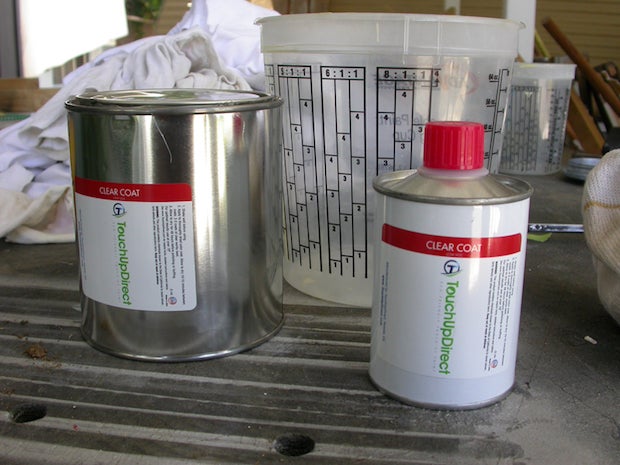
Remove trim, roof-racks and antenna mounts if you can. These little things make a huge difference when you're spraying. Speaking of spraying, you have two options: buy two more spray cans than you think you need and spray it yourself, or if you've done it before and have the equipment, order the paint by the can. You will want to do at least two layers of clear, too, because with modern automotive paint, the clear is what makes the paint-job durable.
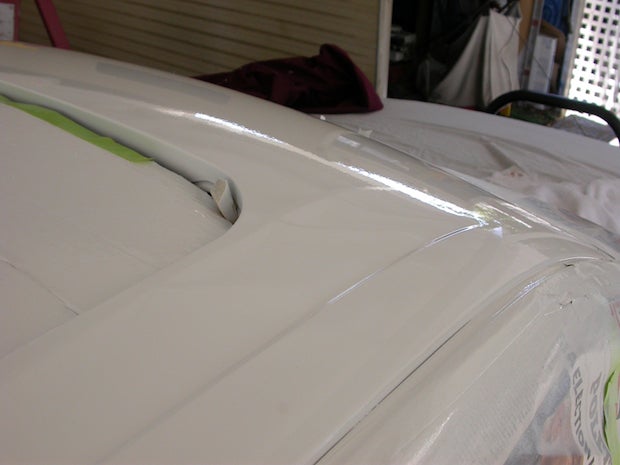
Modern factory auto paint starts with a bonding agent and primer (usually grey - you might see some while sanding), then thin layers of colorcoat, followed by a relatively thick layer of clearcoat. Do yourself a favor and study auto paint - we've had good luck with the Mother's Polish Detail Guide, which teaches about the paint as well as how to make it shiny. Touch-Up Direct has some good paint information on its website, too. Don't shirk the research; and yes, YouBoob is full of videos of people who know a LOT about car paint.
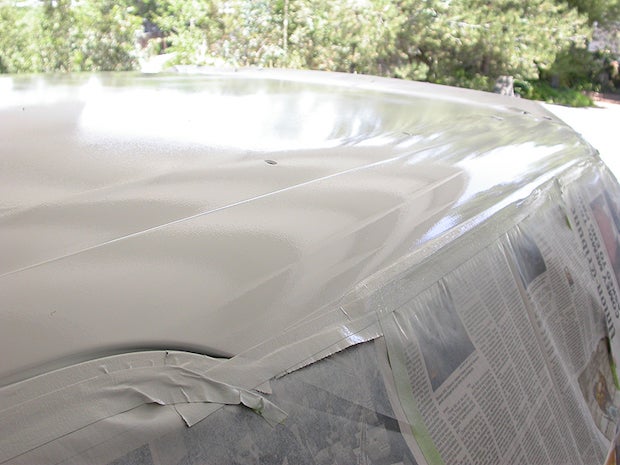
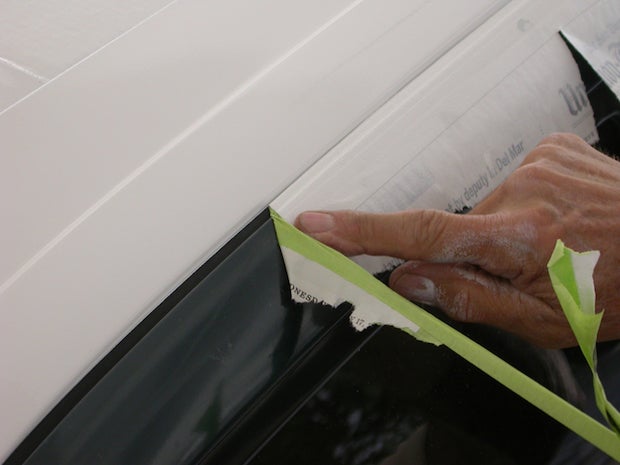
Control for conditions: no direct sunlight, no breeze (unless you want to be picking dust and bugs all afternoon). Tape and mask thoroughly. Follow the rules for your paint. Don't worry - modern "waterborne" paints work great - but you will be using a traditional urethane clear. Remember, it's that clearcoat that takes the abuse, protecting both the colorcoat and the metal beneath it, and allowing the white paint to reflect heat and UV rays, which in turn cools your truck, its interior and its occupants.
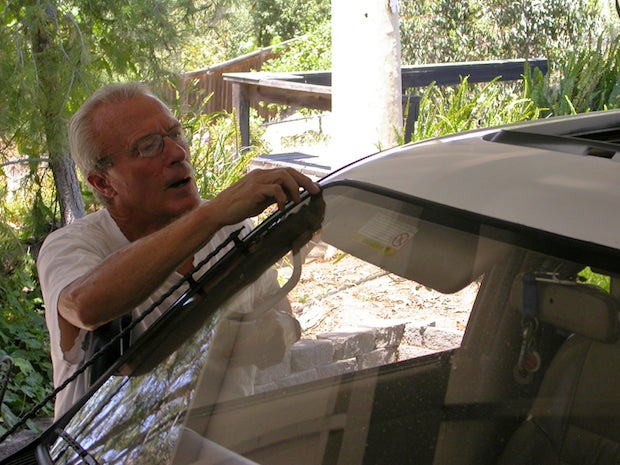


 Your Privacy Choices
Your Privacy Choices